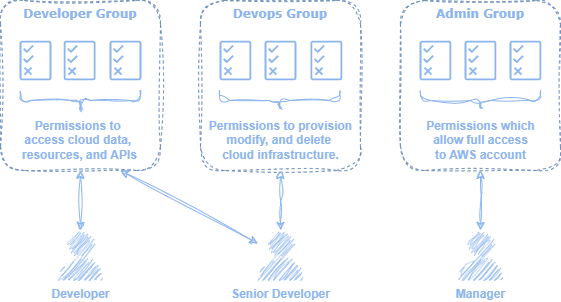Identities
An IAM identity refers to some entity that provides access to AWS resources. There are several types of identities provided by IAM for this purpose, including users, user groups, and roles. By default, newly created identities have no permissions. These entities must be explicitly assigned permissions to successfully perform API calls, which will be discussed in the following Access section.
